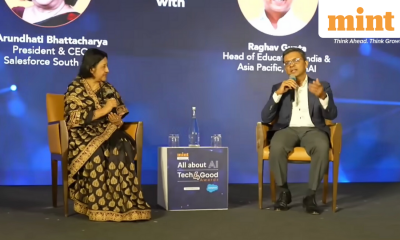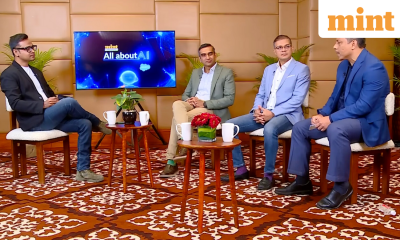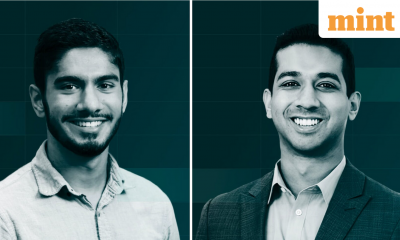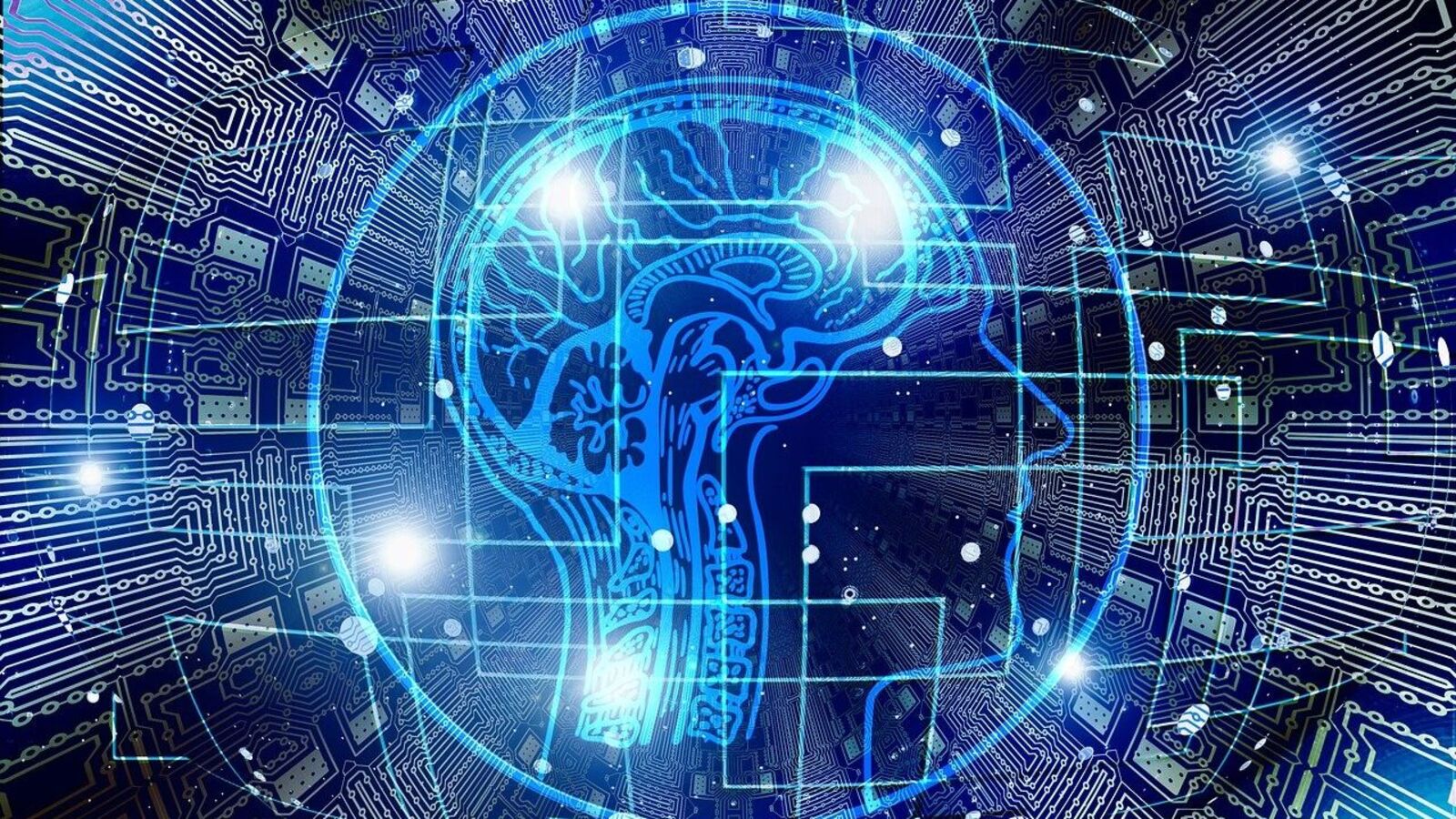
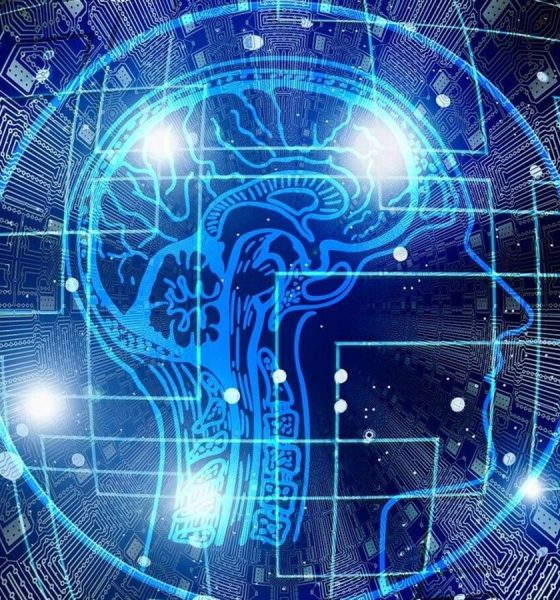
Metaverse
AI needs regulation, but what kind, and how much? – Crypto News
Perhaps the best-known risk is embodied by the killer robots in the “Terminator” films—the idea that AI will turn against its human creators. The tale of the hubristic inventor who loses control of his own creation is centuries old. And in the modern era people are, observes Chris Dixon, a venture capitalist, “trained by Hollywood from childhood to fear artificial intelligence”. A version of this thesis, which focuses on the existential risks (or “x-risks”) to humanity that might someday be posed by AI, was fleshed out by Nick Bostrom, a Swedish philosopher, in a series of books and papers starting in 2002. His arguments have been embraced and extended by others including Elon Musk, boss of Tesla, SpaceX and, regrettably, X.
Those in this “AI safety” camp, also known as “AI doomers”, worry that it could cause harm in a variety of ways. If AI systems are able to improve themselves, for example, there could be sudden “take off” or “explosion” where AIs beget more powerful AIs in quick succession. The resulting “superintelligence” would far outsmart humans, doomers fear, and might have very different motivations from its human creators. Other doomer scenarios involve AIs carrying out cyber-attacks, helping with the creation of bombs and bioweapons and persuading humans to commit terrorist acts or deploy nuclear weapons.
After the release of ChatGPT in November 2022 highlighted the growing power of AI, public debate was dominated by AI-safety concerns. In March 2023 a group of tech grandees, including Mr Musk, called for a moratorium of at least six months on AI development. The following November a group of 100 world leaders and tech executives met at an AI-safety summit at Bletchley Park in England, declaring that the most advanced (“frontier”) AI models have the “potential for serious, even catastrophic, harm”.
This focus has since provoked something of a backlash. Critics make the case that x-risks are still largely speculative, and that bad actors who want to build bioweapons can already look for advice on the internet. Instead of worrying about theoretical, long-term risks posed by AI, they argue, the focus should be on real risks posed by AI that exist today, such as bias, discrimination, AI-generated disinformation and violation of intellectual-property rights. Prominent advocates of this position, known as the “AI ethics” camp, include Emily Bender, of the University of Washington, and Timnit Gebru, who was fired from Google after she co-wrote a paper about such dangers.
View Full Image
Examples abound of real-world risks posed by AI systems going wrong. An image-labelling feature in Google Photos tagged black people as gorillas; facial-recognition systems trained on mostly white faces misidentify people of colour; an AI resumé-scanning system built to identify promising job candidates consistently favoured men, even when names and genders of applicants were hidden; algorithms used to estimate reoffending rates, allocate child benefits or determine who qualifies for bank loans have displayed racial bias. AI tools can be used to create “deepfake” videos, including pornographic ones, to harass people online or misrepresent the views of politicians. And AI firms face a growing number of lawsuits from writers, artists and musicians who claim that the use of their intellectual property to train AI models is illegal.
When world leaders and tech executives met in Seoul in May 2024 for another AI gathering, the talk was less about far-off x-risks and more about such immediate problems—a trend likely to continue at the next AI-safety summit, if it is still called that, in France in 2025. The AI-ethics camp, in short, now has the ear of policymakers. This is unsurprising, because when it comes to making laws to regulate AI, a process now under way in much of the world, it makes sense to focus on attending to existing harms—for example by criminalising deepfakes—or on requiring audits of AI systems used by government agencies.
Even so, politicians have questions to answer. How broad should rules be? Is self-regulation sufficient, or are laws needed? Does the technology itself require rules, or only its applications? And what is the opportunity cost of regulations that reduce the scope for innovation? Governments have begun to answer these questions, each in their own way.
At one end of the spectrum are countries which rely mostly on self-regulation, including the Gulf states and Britain (although the new Labour government may change this). The leader of this pack is America. Members of Congress talk about AI risks but no law is forthcoming. This makes President Joe Biden’s executive order on AI, signed in October 2023, the country’s most important legal directive for the technology.
The order requires that firms which use more than 1026 computational operations to train an AI model, a threshold at which models are considered a potential risk to national security and public safety, have to notify authorities and share the results of safety tests. This threshold will affect only the very largest models. For the rest, voluntary commitments and self-regulation reign supreme. Lawmakers worry that overly strict regulation could stifle innovation in a field where America is a world leader; they also fear that regulation could allow China to pull ahead in AI research.
China’s government is taking a much tougher approach. It has proposed several sets of AI rules. The aim is less to protect humanity, or to shield Chinese citizens and companies, than it is to control the flow of information. AI models’ training data and outputs must be “true and accurate”, and reflect “the core values of socialism”. Given the propensity of AI models to make things up, these standards may be difficult to meet. But that may be what China wants: when everyone is in violation of the regulations, the government can selectively enforce them however it likes.
Europe sits somewhere in the middle. In May, the European Union passed the world’s first comprehensive legislation, the AI Act, which came into force on August 1st and which cemented the bloc’s role as the setter of global digital standards. But the law is mostly a product-safety document which regulates applications of the technology according to how risky they are. An AI-powered writing assistant needs no regulation, for instance, whereas a service that assists radiologists does. Some uses, such as real-time facial recognition in public spaces, are banned outright. Only the most powerful models have to comply with strict rules, such as mandates both to assess the risks that they pose and to take measures to mitigate them.
A new world order?
A grand global experiment is therefore under way, as different governments take different approaches to regulating AI. As well as introducing new rules, this also involves setting up some new institutions. The EU has created an AI Office to ensure that big model-makers comply with its new law. By contrast, America and Britain will rely on existing agencies in areas where AI is deployed, such as in health care or the legal profession. But both countries have created AI-safety institutes. Other countries, including Japan and Singapore, intend to set up similar bodies.
Meanwhile, three separate efforts are under way to devise global rules and a body to oversee them. One is the AI-safety summits and the various national AI-safety institutes, which are meant to collaborate. Another is the “Hiroshima Process”, launched in the Japanese city in May 2023 by the G7 group of rich democracies and increasingly taken over by the OECD, a larger club of mostly rich countries. A third effort is led by the UN, which has created an advisory body that is producing a report ahead of a summit in September.
These three initiatives will probably converge and give rise to a new international organisation. There are many views on what form it should take. OpenAI, the startup behind ChatGPT, says it wants something like the International Atomic Energy Agency, the world’s nuclear watchdog, to monitor x-risks. Microsoft, a tech giant and OpenAI’s biggest shareholder, prefers a less imposing body modelled on the International Civil Aviation Organisation, which sets rules for aviation. Academic researchers argue for an AI equivalent of the European Organisation for Nuclear Research, or CERN. A compromise, supported by the EU, would create something akin to the Intergovernmental Panel on Climate Change, which keeps the world abreast of research into global warming and its impact.
In the meantime, the picture is messy. Worried that a re-elected Donald Trump would do away with the executive order on AI, America’s states have moved to regulate the technology—notably California, with more than 30 AI-related bills in the works. One in particular, to be voted on in late August, has the tech industry up in arms. Among other things, it would force AI firms to build a “kill switch” into their systems. In Hollywood’s home state, the spectre of “Terminator” continues to loom large over the discussion of AI.
© 2024, The Economist Newspaper Ltd. All rights reserved. From The Economist, published under licence. The original content can be found on www.economist.com
-

 Technology7 days ago
Technology7 days agoMulticloud Agility Comes to Financial Services – Crypto News
-
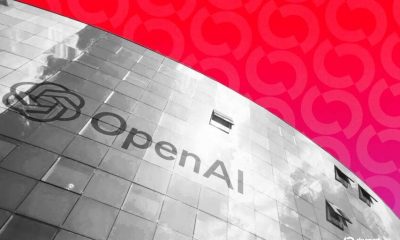
 Cryptocurrency1 week ago
Cryptocurrency1 week agoOpenAI Confirms Data Breach—Here’s Who Is Impacted – Crypto News
-

 Cryptocurrency1 week ago
Cryptocurrency1 week agoNew chains, old problems – Blockworks – Crypto News
-

 Blockchain1 week ago
Blockchain1 week agoEther Eyeing $3.2K As Stablecoin Yields Remain Low: Santiment – Crypto News
-

 Technology7 days ago
Technology7 days agoVivo X300, X300 Pro launched in India, price starts at ₹75,999: Display, camera details and all you need to know – Crypto News
-
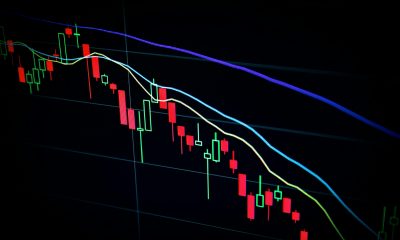
 Blockchain1 week ago
Blockchain1 week agoWhat’s Going On Behind The Scenes With XRP? Expert Answers – Crypto News
-

 Blockchain1 week ago
Blockchain1 week agoUK Expands Crypto Reporting Rules as Global Tax Oversight Tightens – Crypto News
-
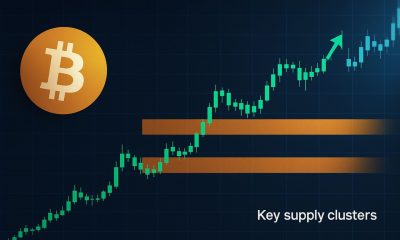
 Blockchain1 week ago
Blockchain1 week agoBitcoin Must Break Key Supply Clusters To Regain ATH Momentum – Watch These Levels – Crypto News
-

 Blockchain1 week ago
Blockchain1 week agoUpbit $30 Million Hack Update: Authorities Link Breach To North Korean Hackers – Crypto News
-
others1 week ago
Why Crypto Market Down Today? (29 Nov) – Crypto News
-
others1 week ago
Solana Price Outlook as CoinShares Withdraws SEC Filing for Staked Solana ETF – Crypto News
-

 Cryptocurrency1 week ago
Cryptocurrency1 week agoCrypto market mixed as Bitcoin tests $93K, Ethereum and XRP hit major resistance – Crypto News
-

 Blockchain1 week ago
Blockchain1 week agoEther Eyeing $3.2K As Stablecoin Yields Remain Low: Santiment – Crypto News
-
Business1 week ago
Crypto Exchange Bitget Donates $1.54M To Hong Kong Fire Victims – Crypto News
-

 Cryptocurrency1 week ago
Cryptocurrency1 week agoZcash, Monero in Tight Ranking Race: Who Wins? – Crypto News
-

 Cryptocurrency1 week ago
Cryptocurrency1 week agoXRP price prediction: ETF inflows, CME futures, and technical pressure align – Crypto News
-

 Cryptocurrency1 week ago
Cryptocurrency1 week agoWhy CoinShares Just Quit the $600M XRP and SOL ETF Battle – Crypto News
-
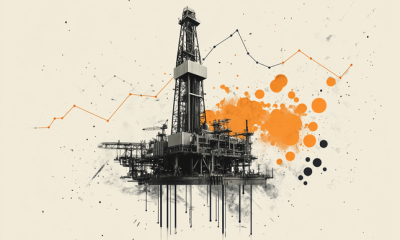
 others1 week ago
others1 week agoWTI Crude Oil gains as Russia-Ukraine talks, OPEC+ meeting eyed – Crypto News
-
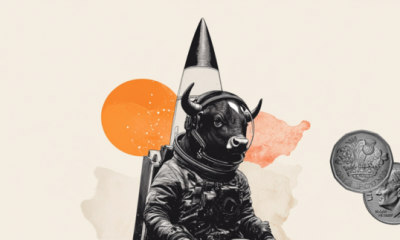
 others1 week ago
others1 week agoGBP/USD edges lower to 1.3220 – Crypto News
-

 Metaverse1 week ago
Metaverse1 week agoIs Big Tech’s superintelligence narrative inflating the AI bubble? – Crypto News
-
Technology1 week ago
Jerome Powell Speech Today: What To Expect as Fed Ends QT – Crypto News
-
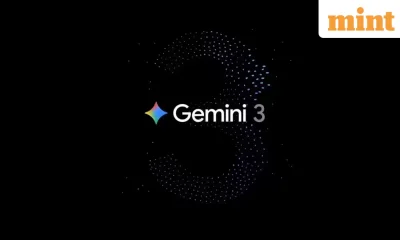
 Technology1 week ago
Technology1 week agoYou’re using Gemini wrong: 7 Viral AI prompts that will instantly transform your presentations – Crypto News
-
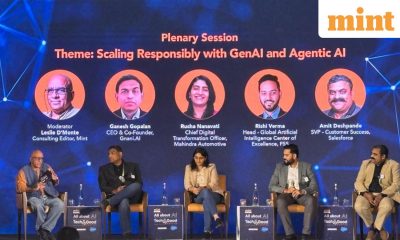
 Metaverse1 week ago
Metaverse1 week agoAI’s positive impact in focus at Mint All About AI Tech4Good Summit 2025 – Crypto News
-

 Cryptocurrency1 week ago
Cryptocurrency1 week ago‘ZEC Is 20x Lower Than XRP’: Solana Builder Breaks Silence After Zcash’s 50% Crash – Crypto News
-
Business1 week ago
Coinbase Submits Recommendations to CFTC on Crypto Market Rules – Crypto News
-

 Blockchain1 week ago
Blockchain1 week agoBitcoin Forms Short-Term Bottom, $100,000 Rally in Sight – Crypto News
-

 Cryptocurrency1 week ago
Cryptocurrency1 week agoRemittix vs. Digitap ($TAP): Get in the action for $1 million in Black Friday bonuses – Crypto News
-
Business1 week ago
Michael Saylor Hints Fresh Bitcoin Buy With “Green Dots” Tease – Crypto News
-

 Cryptocurrency1 week ago
Cryptocurrency1 week agoBitcoin, Ethereum, and XRP Crash Triggering $637M in Liquidations – Crypto News
-
others7 days ago
Ethereum Price Crashes Below $3,000 as $500M Longs Liquidated: What’s Next? – Crypto News
-

 others1 week ago
others1 week agoXAG/USD hits record $56 as bulls dominate – Crypto News
-
Business1 week ago
China Begins Policy Talks to Crack Down on Stablecoin and Crypto Payments – Crypto News
-

 Blockchain1 week ago
Blockchain1 week agoSUI Climbs Into High-Risk Territory As Wave 4 Nears Its Exhaustion Point – Crypto News
-
Business1 week ago
Robert Kiyosaki Recommends Bitcoin and Ethereum as Hedge Against Potential Global Crisis – Crypto News
-
Business1 week ago
Hyperliquid Team Moves $90M HYPE as Network Becomes Top Fee Chain – Crypto News
-

 Technology1 week ago
Technology1 week agoIs your iPhone obsolete? Apple adds 5 new devices to the ‘no repair’ list – Crypto News
-

 Cryptocurrency1 week ago
Cryptocurrency1 week agoTurkmenistan joins global crypto regulation push with sweeping new digital asset law – Crypto News
-
others1 week ago
21Shares XRP ETF To Begin Trading on Monday as Institutional Inflows Hit $666 Million – Crypto News
-
Business1 week ago
Arthur Hayes Predicts Bitcoin Rally To $500K By Next Year Over Fed Easing – Crypto News
-
Cryptocurrency1 week ago
Peter Schiff Predicts Bitcoin Decline Will Extend Into December as BTC Closes Out Red November – Crypto News
-
Technology1 week ago
Ethereum Price Prediction 2025: How High Can ETH Go by Year-End? – Crypto News
-
others1 week ago
BNB Chain Taps Arbitrum Veteran Nina Rong to Lead Ecosystem Growth – Crypto News
-
others1 week ago
Is Kalshi Manipulating Prediction Markets? Platform Hit With Lawsuit Over Violations – Crypto News
-
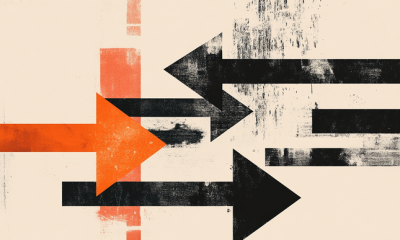
 others1 week ago
others1 week agoGBP/JPY steadies as firm Tokyo inflation revives BoJ rate-hike speculation – Crypto News
-

 others1 week ago
others1 week agoCanada GDP smashes expectations at 2.6% – TDS – Crypto News
-
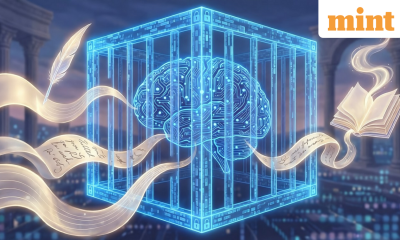
 Technology1 week ago
Technology1 week agoChatGPT and Gemini can be tricked into giving harmful answers through poetry, new study finds – Crypto News
-
others1 week ago
Grayscale Cleared to Launch First Spot Chainlink ETF This Week Amid Rising Demand – Crypto News
-

 Cryptocurrency1 week ago
Cryptocurrency1 week agoAstrology for traders – Blockworks – Crypto News
-
Technology1 week ago
Sony Bank Joins Ripple, Circle to Launch USD-Pegged Stablecoin in the U.S. by 2026 – Crypto News
-
Business1 week ago
Schiff Predicts ‘Beginning of the End’ for MSTR as Strategy Eases Bitcoin Sell-Off Fears With $1.44B Reserve – Crypto News











